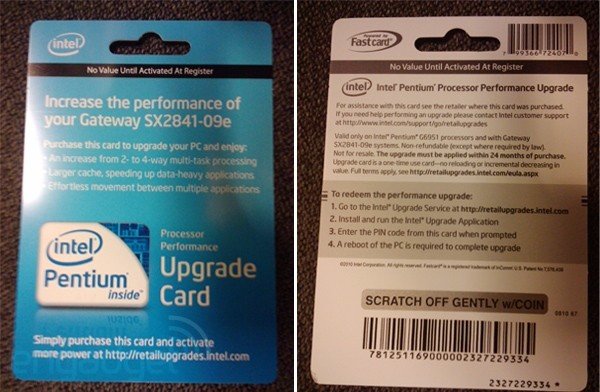Intel already tried to upgrade CPUs to a higher model with a new product key, but that was more than ten years ago. Now it seems to be coming back, the first patches have been added to Linux and a GitHub repository was created in parallel to clarify further questions in this regard.
Intel SDSi for Xeon processors
Intel Software Defined Silicon (SDSi) is the name of the new program. It allows the activation of additional CPU features after entering a key. What exactly this can include has not yet been precisely defined, but the possibilities seem quite large. Many scenarios are conceivable, from activating idle caches to more clock speed and cores with increased TDP. This time, however, Intel has chosen the Xeon product family for professional users as the first solution and is taking a different path than it was a decade ago.
The subject is not entirely new. In 2010 and 2011, Intel had made several attempts in this direction and at the time the focus was primarily on the in-house entry-level processors.
In the first round, an upgrade card for the price of $ 50 from the Pentium G6951 upgraded to the Pentium G6952 with more cache and Hyper-Threading.
In the following year, four processors followed with a similar procedure, now it was the turn of the Pentium and Intel Core i3 in the desktop and notebook. But that should be the last endeavor in this direction for the time being. After that it became quiet about the topic.
 Upgrade Card in stores
Upgrade Card in stores  Intel upgrade also for Core i3
Intel upgrade also for Core i3 p class = “p text-width”>Intel has not officially attempted this with server processors so far, but the possibilities could go even further here. The purchase of a basic model and then the activation of not only cores, cache and clock, but also additional features could have a far greater impact here.
Special models and custom SKUs
Now the CPU manufacturers AMD and Intel often have special models in their portfolio with maximum cache with a few cores or very high clock with only a few cores as a counterpart for maximum expansion with a lower cycle, such models would be suitable, for example.
Also many custom SKUs that Intel produces for large manufacturers are ultimately just more or less heavily adapted normal models in terms of clock rate, number of cores and TDP, which is also about one could solve such a service with certain parameters. The basis would always be that the CPU die is the same in its environment. It will be interesting to see how this will ultimately be implemented.